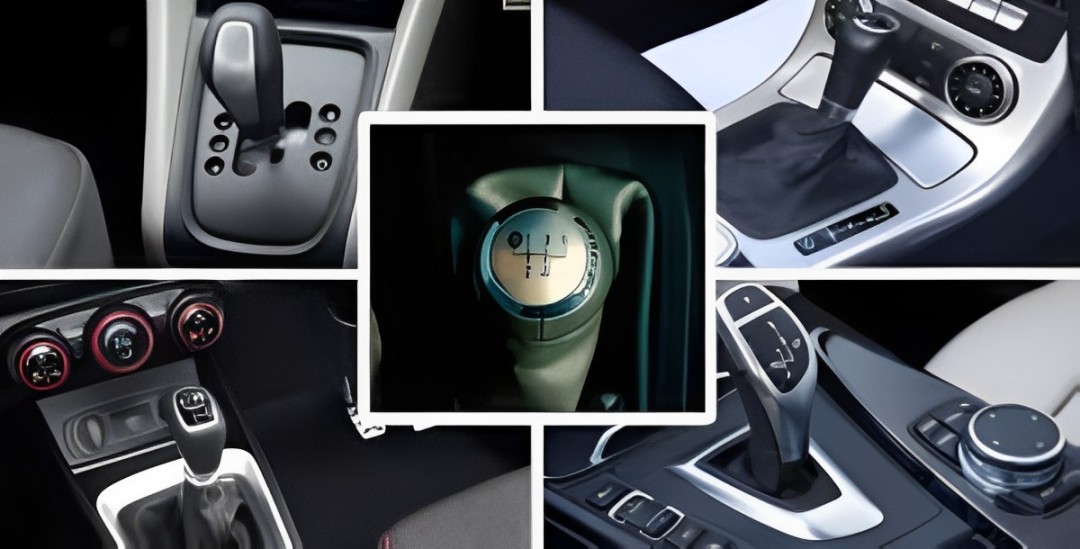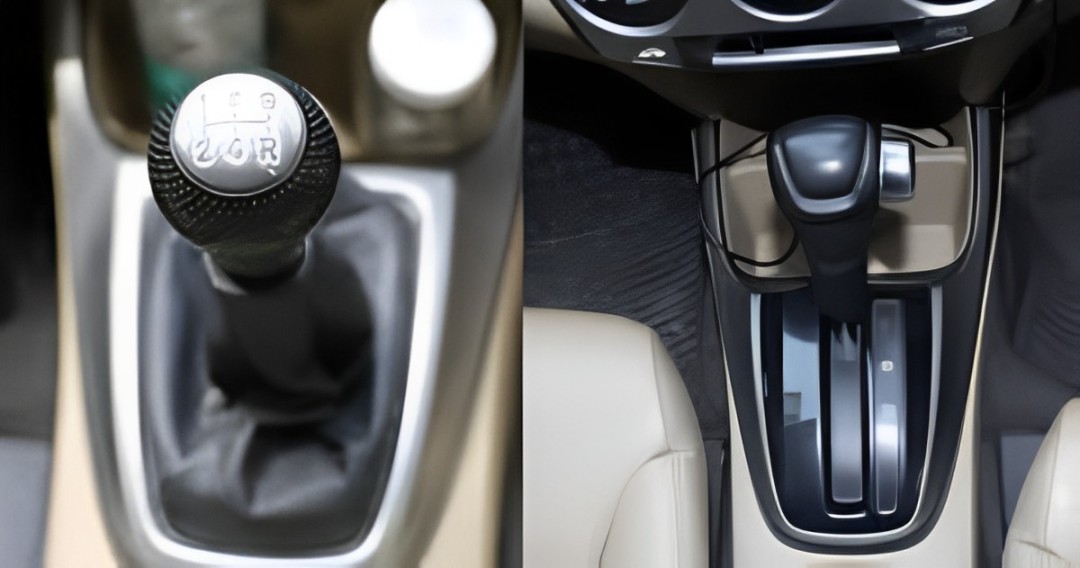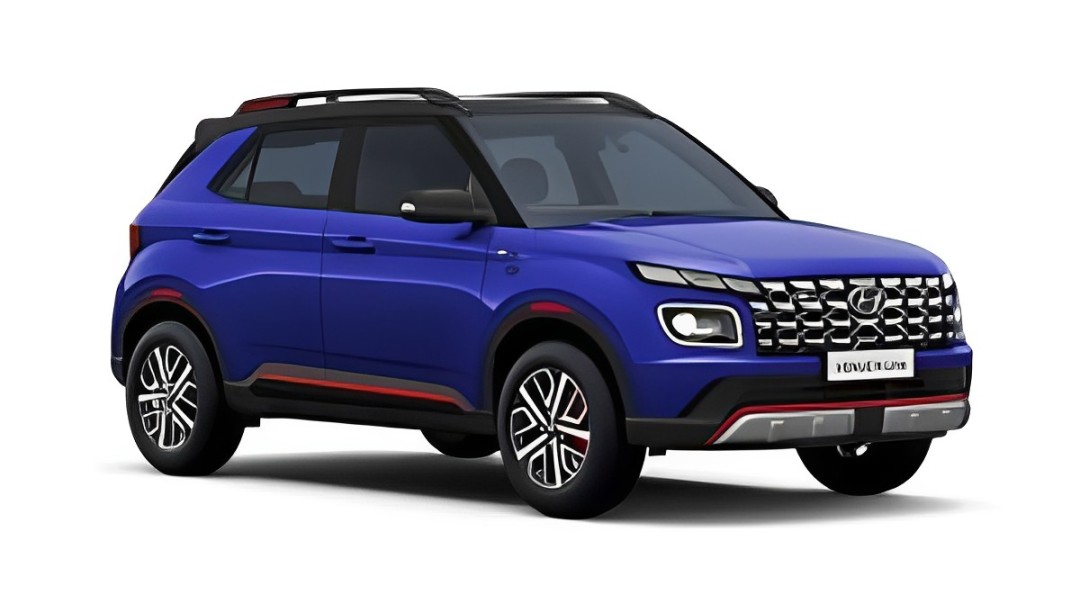The transmission in your car is the mastermind behind transferring engine power to the wheels. But with various options like manual, AMT, DCT, and CVT, choosing the right one can feel like deciphering a foreign language. Don’t worry, gearhead! This guide will break down these popular transmission types, making your car selection process smooth sailing.
The OG: Manual Transmission
- Shifter’s Paradise: You control the gear changes using a clutch pedal and gear stick.
- Engaging Experience: Offers a strong connection to the driving experience, ideal for those who love being in control.
- Learning Curve: Requires practice to master smooth gear changes and avoid stalling.
- Fuel Efficiency: Can be slightly more fuel-efficient in the hands of a skilled driver.
What is AMT in Car (Automated Manual Transmission)?
Wondering what is AMT in car? Read below:
- Auto Light: Feels like an automatic car, but uses a modified manual transmission.
- Cost-Effective: Generally less expensive than other automatic options.
- Shifting Quirks: Gear changes can be slightly jerky, especially at low speeds.
- Fuel Economy: Offers decent fuel efficiency comparable to a manual car.
What is a DCT transmission?

Dual Clutch Transmission (DCT) is an advanced automated mechanical transmission that uses two separate clutches for odd and even gears stacked in one housing. This transmission combines the efficiency and control of a manual transmission with the convenience of an automatic transmission.
How it works:
One clutch manages the odd gears while the other manages the even gears. Lightning-fast shifts occur within milliseconds by pre-selecting the next possible gear while the clutch is engaged, shifting the transmission between the two gears without any interruption in torque. Both clutches have their input shaft from the engine flywheel.
What is a CVT transmission?
A continuously variable transmission (CVT) is an automatic transmission that smoothly matches engine speed and wheel speed requirements without having a fixed gear ratio. Instead of a meshing gear set, it uses a segmented steel belt or chain that runs between two different-sized pulleys to change the gear ratio. One pulley is connected to the engine input and the other is connected to a gear train that leads to the final drive wheels.
How it works:
Continuously varying the effective diameter of the input and output pulleys provides seamless acceleration across the entire speed range without abrupt gear changes. As engine speed increases, the radius of the input pulley decreases, but at the same time, the diameter of the output pulley increases proportionately. This means that belt tension remains constant regardless of speed adjustment.
DCT vs. CVT Fuel Efficiency: Comparison
When comparing CVT vs. DCT transmissions, there are several factors to consider, including performance, fuel economy, cost, maintenance and durability. Here we compare DCT vs. CVT based on various factors.
DCT vs. CVT Fuel Efficiency: Performance

Here’s a performance comparison between the DCT and CVT transmissions.
| Factors | DCT | CVT |
| Gearshift time | Lightning fast | Seamless driving experience |
| Type of vehicles | High-performance and sports cars | Mainstream vehicles |
DCT transmissions are preferred because they provide faster, sharper gear changes, and offer better acceleration and responsiveness for high-performance vehicles. The extremely short gear change intervals of the DCT allow it to stay within the engine’s optimum performance range. The CVT transmission provides a smoother but more gradual increase in speed without the urgent downshifts of the DCT required for quick passing or hill climbing.
The DCT has proven to be significantly faster on the track, and the quick gear changes of the dual-clutch make aggressive driving even more enjoyable.
Difference between DCT vs. CVT Fuel Efficiency
Below is a comparison of the efficiency of the transmissions:
| Factors | DCT | CVT |
| Mileage | Slightly lower mileage | Higher fuel efficiency |
| Responsiveness | Highly responsive | Slightly sluggish |
A properly programmed CVT improves fuel economy in stop-and-go city traffic, optimizing engine speed for the required speed. DCTs cannot match the fuel economy of CVTs in densely populated cities but can match or beat it on the highway due to their longer gear ratios. CVTs have the advantage of less friction losses in the drivetrain because fewer parts are driving the wheels.
DCTs compensate for this with extremely smooth zero-stroke shifts, keeping engine speed in the maximum efficiency range through tight gear ratios.
Difference between DCT vs. CVT: Cost
Comparing the cost of DCTs vs. CVTs, DCTs can be expensive to manufacture and maintain. In contrast, CVT transmissions are inexpensive; however, CVT prices vary by vehicle model and manufacturer. Complex dual-clutch packages, controls, and additional components make DCTs more expensive to manufacture.
As CVTs are adopted in large numbers in the small car segment, economies of scale will make them much cheaper to manufacture. The cost of replacing a damaged CVT belt or aviator pulley is less than repairing the dual-clutch. For high-performance sports models, the DCT option may be more expensive, although it is more expensive to manufacture, due to its advantages.
Difference between DCT and CVT Fuel Efficiency: Maintenance
DCT and CVT require regular maintenance and may be subject to wear. However, dual-clutch transmissions are complex and require special care, and continuously variable transmissions may not last as long as other types of car transmissions. CVT steel belts and aviator pulleys require regular oil changes and inspections after 20,000 to 40,000 kilometers.
The dual-clutch pads in a DCT transmission are worn parts that need to be replaced after approximately 100,000 miles. Labor costs for repairing a DCT tend to be higher than maintenance and belt replacement for a CVT transmission.
For High-Performance Driving:

The Dual Clutch Transmission is a much better choice for driving pleasure and racing purposes. Incredibly fast shift times in the power band ensure sports car-like acceleration where no delays can be tolerated. DCT also allows for abrupt downshifts for heavy braking, making for a thrilling experience.
Related: CNG vs. Petrol Car: Which One is Better?
For your daily commute:
CVT provides optimal gear ratios at any speed, making it ideal for stop-and-go city driving. Smooth transitions improve comfort while maintaining engine efficiency. Traffic predictability doesn’t justify a complex DCT that requires constant gait analysis. Hard-driving DCT cars require clutch pack servicing sooner than quiet CVTs on the highway
For highway driving:
On long journeys, the DCT achieves maximum driving efficiency and lower NVH values by selecting individual gears for the desired speed. The adaptive cruise function also complements the DCT’s seamless automatic shifting between grades. The characteristics of the CVT are less suitable for highway use.
For off-road driving:
The Crawler or low-speed transmission mode optimizes the DCT for technical requirements such as torque regulation expected in hazardous off-road conditions. The CVT lacks the necessary control in slippery scenarios with traction problems.
For towing heavy loads:
The robust DCT transmission reliably handles high torque inputs from the towing caravan or trailer without delay, avoiding the risk of belt/pulley slippage associated with CVTs when there is a sudden need for engine power.
Best DCT cars in India 2024
Here are some top DCT cars in India.
| Car | Engine | Fuel Efficiency | Ex-showroom Price |
| Honda Amaze | 1.2-litre petrol | 18.60 km | Rs. 8.50 lakh onwards |
| Honda City | 1.5-litre petrol | 18.40 km | Rs. 13.62 lakh onwards |
| Nissan Magnite | 1.0-litre turbo petrol | 19 km | Rs. 9.93 lakh onwards |
| Honda Jazz | 1.2-litre petrol | 17.10 km | Rs. 9.18 lakh onwards |
| Renault Kiger | 1.0-litre turbo petrol | 19 km | Rs. 10.45 lakh onwards |
| Hyundai Verna | 1.5-litre turbo petrol | 16.50 km | Rs. 13.50 lakh onwards |
| Hyundai Creta | 1.5-litre petrol | 16.50 km | Rs. 16.26 lakh onwards |
| Kia Seltos | 1.5-litre petrol | 16.50 km | Rs. 14.65 lakh onwards |
| MG Astor | 1.5-litre petrol | NA | Rs. 13.50 lakh onwards |
| Toyota Hyryder | 1.5-litre petrol hybrid | 28 km | Rs. 15.61 lakh onwards |
| MG Hector | 1.5-litre turbo petrol | 14 km | Rs. 15 lakh onwards |
| Maruti Suzuki Grand Vitara | 1.5-litre turbo petrol | 28 km | Rs. 18 lakh onwards |
The Speedy Specialist: DCT (Dual-Clutch Transmission)
- Lightning-Fast Shifts: Delivers smooth and rapid gear changes for a sporty feel.
- Performance Powerhouse: Often found in high-performance cars due to its efficiency and responsiveness.
- Price Point: Typically more expensive compared to other automatic options.
- Fuel Efficiency: This can offer good fuel economy depending on driving style.
The Smooth Operator: CVT (Continuously Variable Transmission)
- Seamless Acceleration: Provides a smooth, uninterrupted driving experience with no gear changes felt.
- City Comfort: Perfect for city driving due to its focus on smooth acceleration.
- Less Engaging Drive: This can feel less engaging for those who prefer a more connected driving experience.
- Fuel Efficiency: Generally good fuel economy, especially in stop-and-go traffic.
Difference between manual car, AMT car, DCT, CVT: Conclusion
So, which transmission is your driving soulmate? Here’s a quick cheat sheet:
- Thrive on control and fuel efficiency? A manual transmission might be your perfect match.
- Craving an automatic experience on a budget? The AMT could be your champion.
- Need a sporty feel with lightning-fast gear changes? Look no further than the DCT.
- Prioritize a smooth, uninterrupted drive? The CVT might be your winning formula.
Remember: Consider your driving habits, budget, and desired driving experience before making your final decision. Test drive each option to see which one feels most comfortable and enjoyable for you. Happy trails!**
Read Also:

